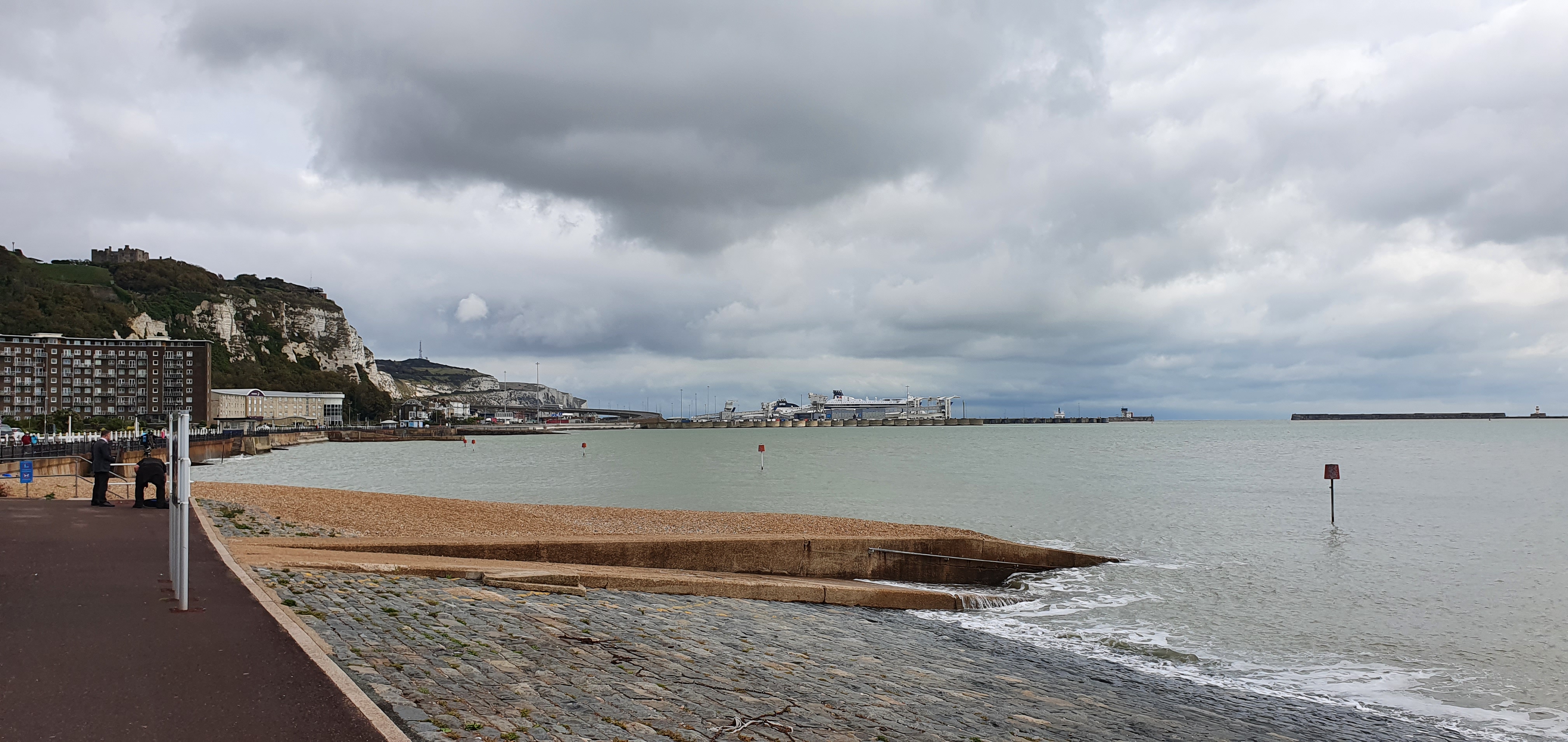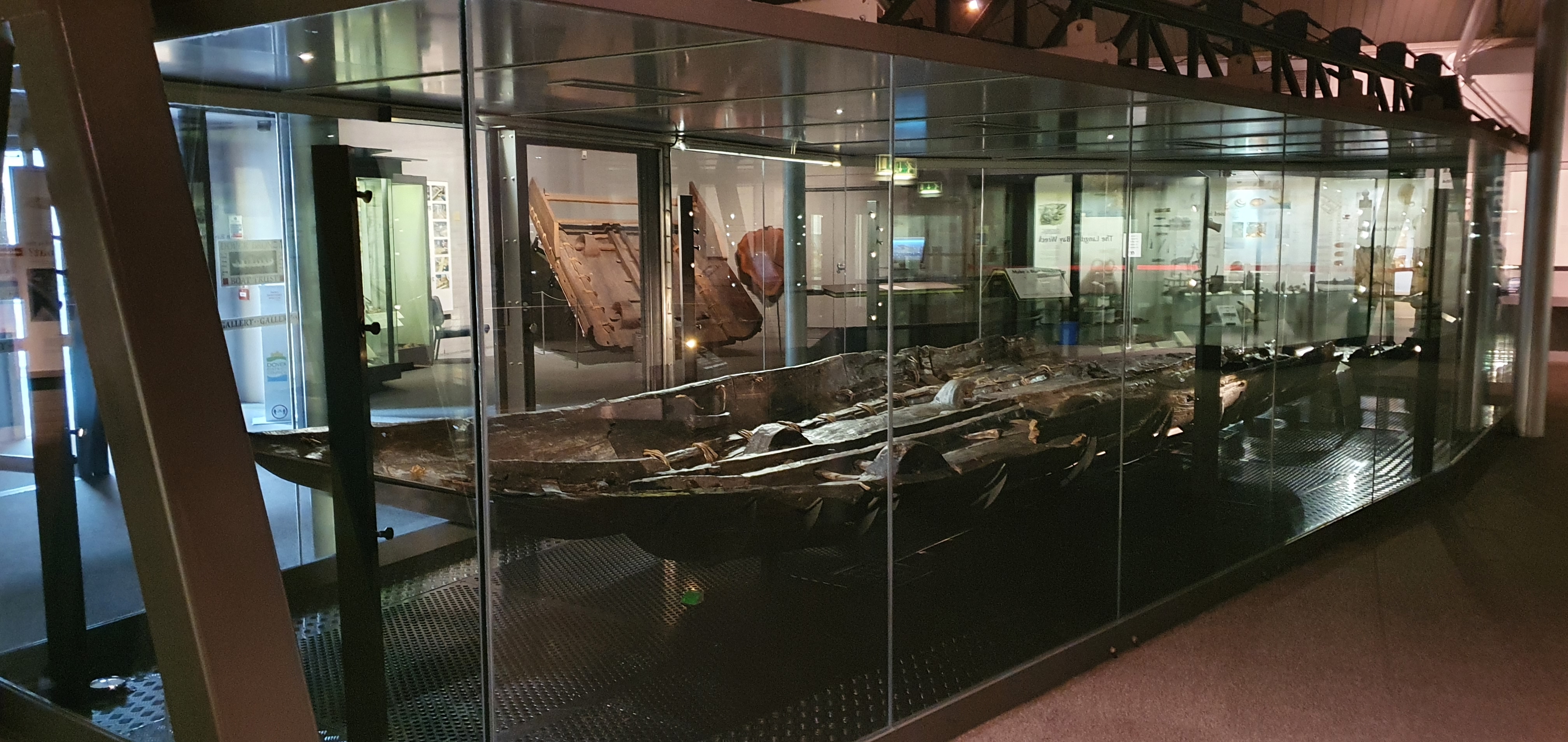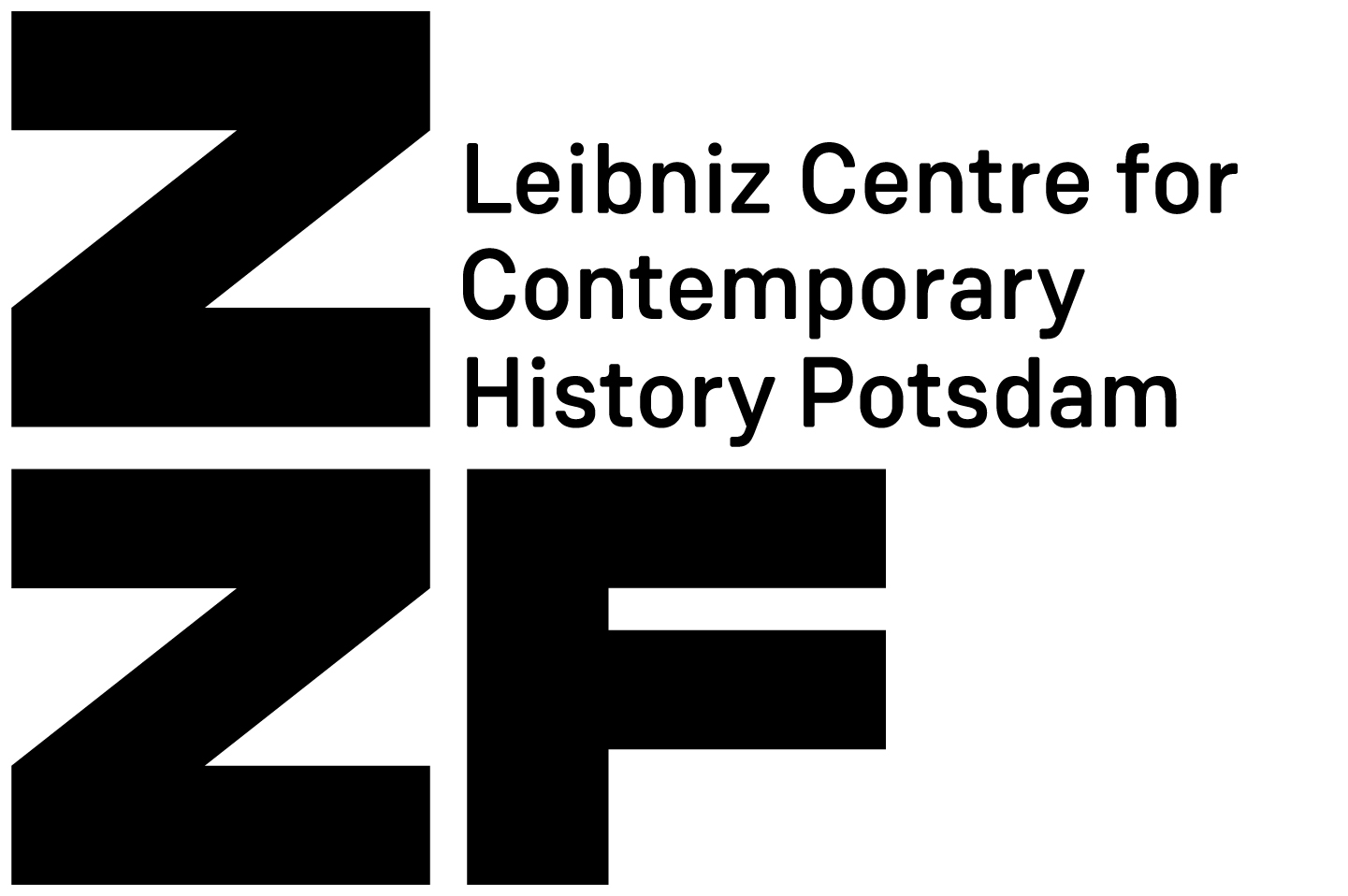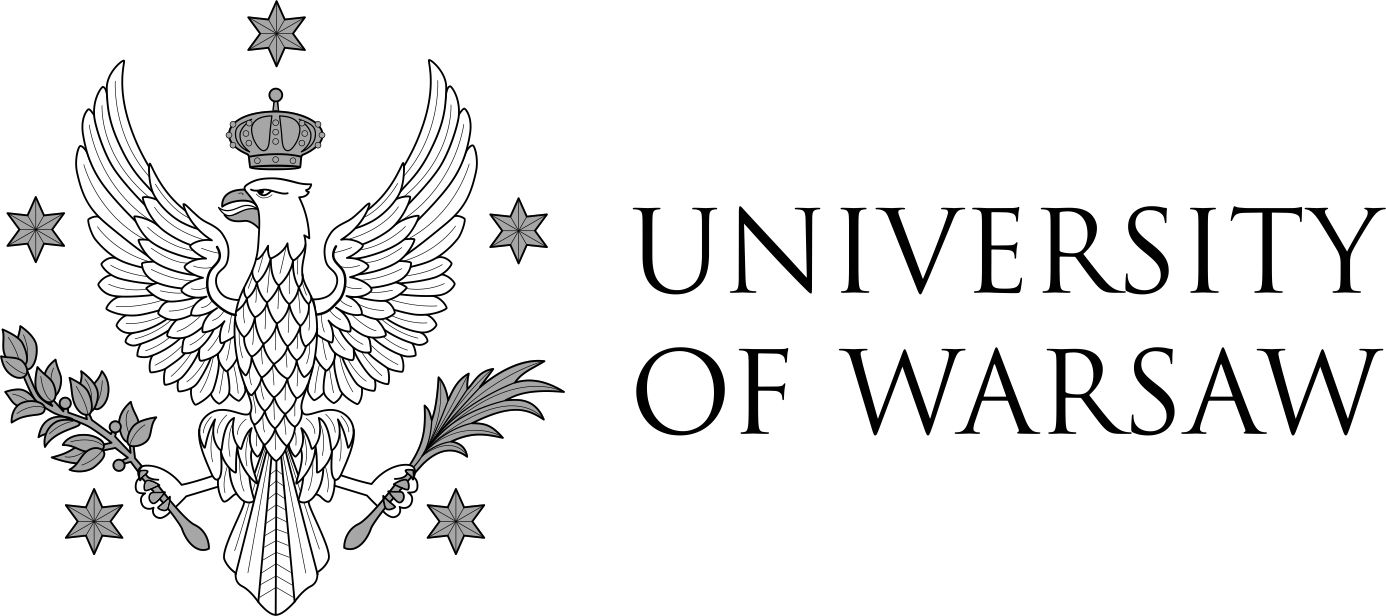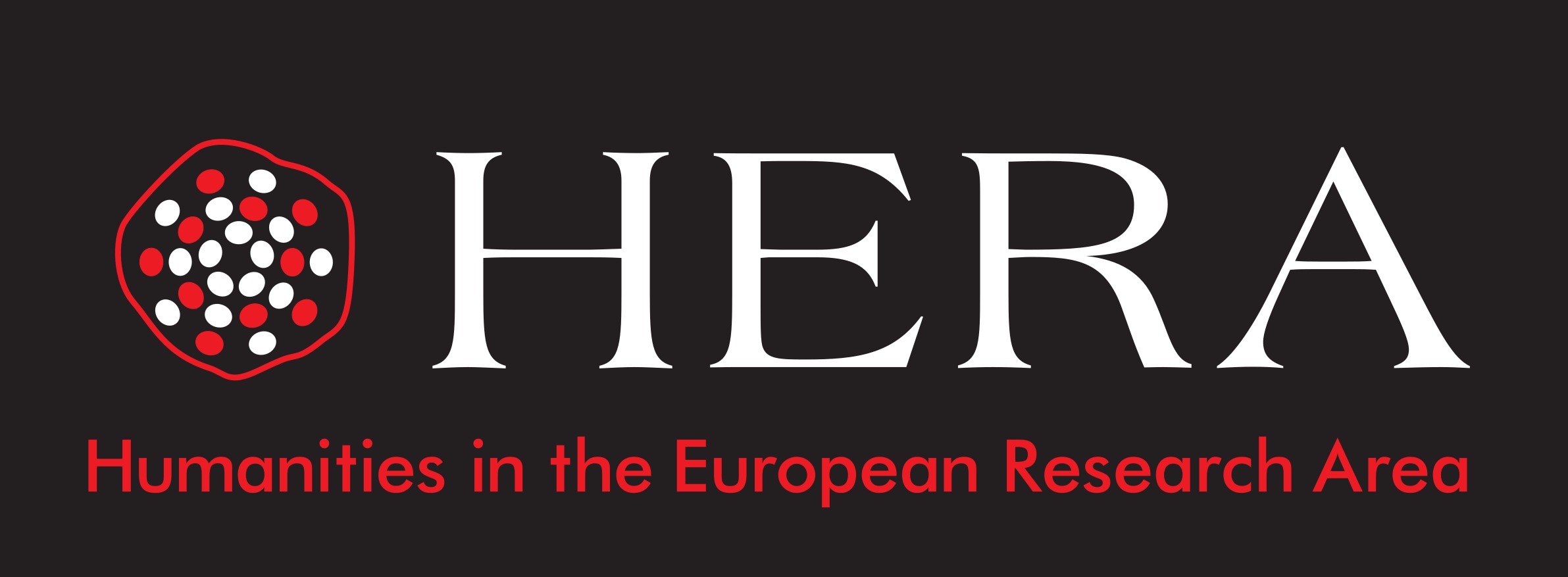A View from the Coastline of Kent
Standing on Dover beach at midday on 1 October 2020, Europe felt close both physically and metaphorically. Looking out across the shingle and English Channel I could glimpse the coastline of northern France. To my left was Dover ferry terminal, where cars and lorries waited to board ships which would take them across the Strait of Dover to Calais and Dunkirk.
Dover beach looking towards the ferry terminal
Also on my left, a news reporter and accompanying cameraman were wrapping up. I would see their footage on the regional news that evening, which discussed a recently-leaked Home Office paper considering offshore locations for processing asylum-seekers arriving from Europe. Options included establishing a centre on Ascension Island, a remote UK territory in the Atlantic Ocean, and using disused ferries moored off the coast. And as I left Dover by car, the road carried the car up over the ferry terminal. Below, at the terminal entrance, a lorry was surrounded by police cars with lights flashing. Later I would read that the lorry driver had been arrested after four migrants were found in the trailer of the lorry, which was bound for France.
I had been visiting the port towns of Kent to reflect on how its cultural institutions were engaging with issues of belonging. The county of Kent is the closest part of the UK to France and Europe yet its residents had voted heavily in favour of leaving the EU in the 2016 referendum. As migrants continue to arrive on its shores in leaky craft and its roads look likely to become lorry parks in the face of an incomplete post-Brexit customs system, many Kent residents consider themselves especially disadvantaged by the UK’s relationship with Europe and the county has become a focal point in public discourse concerning this relationship and associated inward migration. Less than a month earlier, Far-right demonstrators had blocked a Dover dual carriageway in protest at the increasing number of migrants arriving on nearby beaches.
In the small council-run museums at Dover and along the coast at Folkestone, Europe as an entity and as a departure point for people seeking refuge was present but only in the past. At Folkestone Museum the small display space is dominated by a large painting of The Landing of the Belgian Refugees 1916 which recounts the warm reception given by the people of Folkestone to the 65,000 civilian refugees who passed through the town following displacement by Germany’s invasion of neutral Belgium in 1914.
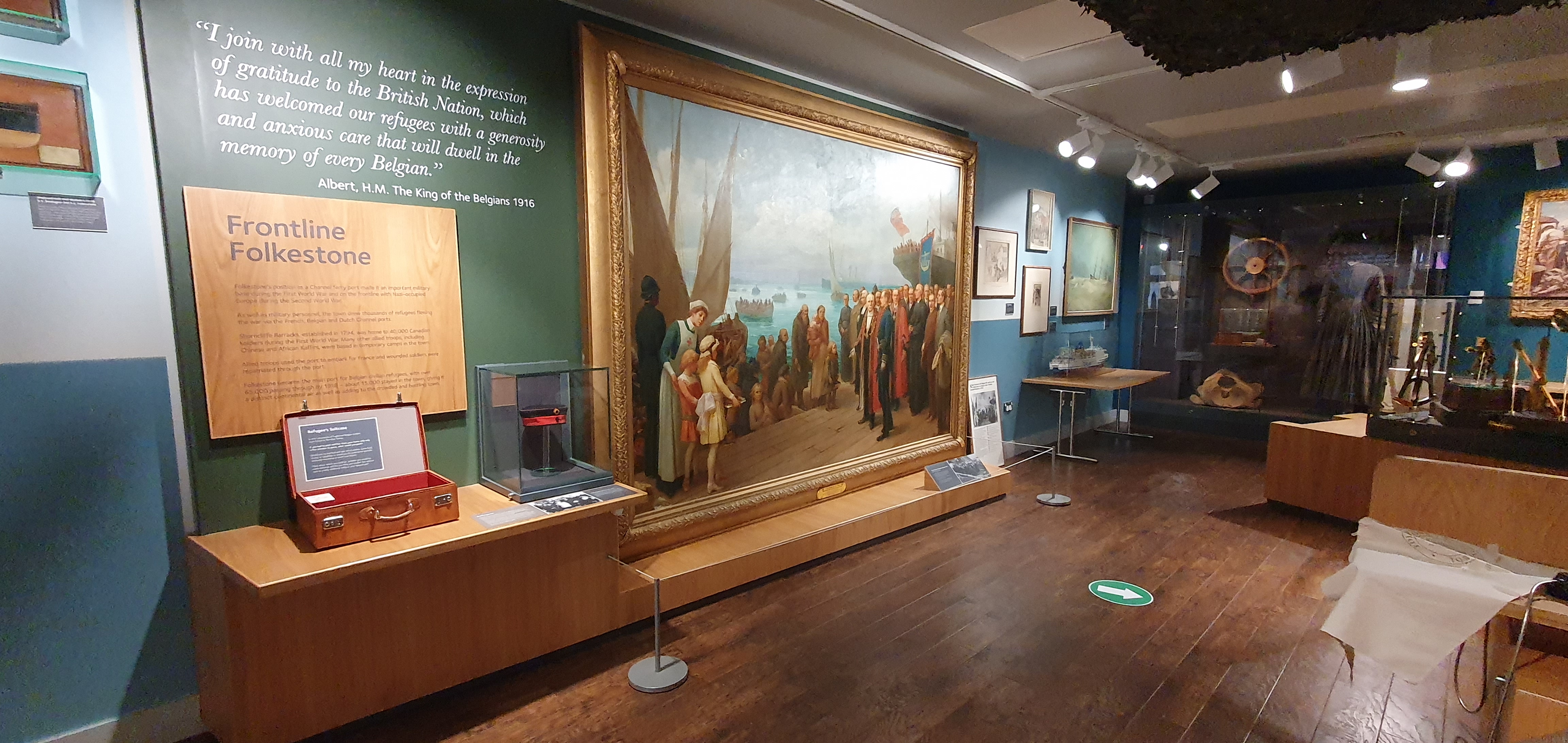
Folkestone Museum display which includes the painting The Landing of the Belgian Refugees 1916
At Dover Museum its star object, a large Bronze Age boat constructed of planks of oak, is displayed in a dedicated gallery. Traces of sand found in the bottom of the boat suggest it was used to make the hazardous journey across the English Channel, making it the world's oldest known seagoing vessel. Despite the clear parallels between these historic objects and social realities in the present, these connections are not commented on. ‘Belonging’, it seems, can only be articulated through a historical imaginary, and perhaps it might be argued that past moments of welcome help displace contemporary anxieties about Britain’s relationship with Europe and treatment of those individuals who arrive on its shores seeking refuge.
The Bronze Age boat at Dover Museum
It might be tempting to criticise these institutions for failing to meet current sectoral expectations that they should adopt an activist practice and seek to promote social justice, using their proximity to matters of political debate to argue for greater compassion and empathy in these difficult times. And yet, as was clear from visiting them, these museums are small and poorly-resourced institutions based in civic buildings and constrained by space, funding, capacity as well as by policy from engaging in contentious politics. In considering the role of museums in promoting a sense of belonging, a fuller account is needed which considers the contingent (and increasingly financially perilous) space museums operate in. In looking to these institutions to perform a role in articulating belonging, especially of marginalised minorities, more attention needs to be paid to how they can navigate the difficult waters of local and national policy. Only then might institutions such as those on Kent’s coastline be more fully able to reflect on the present, as well as past, social realities in which they are embedded.

